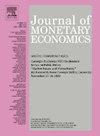收入差异和健康差异:预防与治疗医学的作用
IF 4.3
2区 经济学
Q1 BUSINESS, FINANCE
引用次数: 0
摘要
我指出,虽然富人在生命早期在医疗保健方面的支出更多,但在美国,从中年到老年,穷人在医疗保健方面的支出比富人多25%。此外,穷人寻求医疗服务的频率较低,但当他们这样做时,却面临更高的极端费用风险。我开发了一个生命周期模型,结合了物理和预防性健康资本,以及美国医疗保健系统的特点。预防性保健资本控制健康冲击的分布,从而控制预期寿命。该模型表明,由于消费的边际效用较低,富人在预防保健方面的支出更多,导致老年健康冲击较轻,治疗费用较低。公共保险——覆盖了大量的治疗费用——通过阻碍穷人投资于预防性健康的动机,无意中扩大了预期寿命的差距。政策实验表明,扩大保险覆盖范围和补贴预防性保健以鼓励穷人在生命早期使用医疗保健会产生可观的福利收益。本文章由计算机程序翻译,如有差异,请以英文原文为准。
Income differences and health disparities: Roles of preventive vs. curative medicine
I show that while the rich spend more on healthcare early in life, the poor outspend them by 25% from middle to old age in the US. Furthermore, the poor seek medical care less frequently but face higher risks of extreme expenses when they do. I develop a life-cycle model, incorporating physical and preventive health capital, along with features of the US healthcare system. Preventive health capital governs the distribution of health shocks, thereby controlling life expectancy. The model suggests that the rich spend more on preventive care due to lower marginal utility of consumption, resulting in milder health shocks and lower curative expenses in old age. Public insurance—covering large curative expenditures—inadvertently widens the life expectancy gap by hampering the poor’s incentives to invest in preventive health. Policy experiments suggest that expanding insurance coverage and subsidizing preventive care to encourage the poor to use healthcare early in life yield substantial welfare gains.
求助全文
通过发布文献求助,成功后即可免费获取论文全文。
去求助
来源期刊

Journal of Monetary Economics
Multiple-
CiteScore
7.20
自引率
4.90%
发文量
90
审稿时长
74 days
期刊介绍:
The profession has witnessed over the past twenty years a remarkable expansion of research activities bearing on problems in the broader field of monetary economics. The strong interest in monetary analysis has been increasingly matched in recent years by the growing attention to the working and structure of financial institutions. The role of various institutional arrangements, the consequences of specific changes in banking structure and the welfare aspects of structural policies have attracted an increasing interest in the profession. There has also been a growing attention to the operation of credit markets and to various aspects in the behavior of rates of return on assets. The Journal of Monetary Economics provides a specialized forum for the publication of this research.
 求助内容:
求助内容: 应助结果提醒方式:
应助结果提醒方式:


